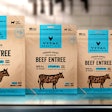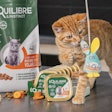
In the popular press, human food writers and industry analysts have made their predictions for the trends that will influence cuisine in 2023. Some of these food fashions have potential to migrate into pet food formulations.
Regenerative agriculture
Both the New York Times and U.S. News and World Reports writers mentioned regenerative agriculture as the next phase in food sustainability. Like agroecology, regenerative agricultural practices attempt to restore ecosystems on farmlands while continuing to produce food. The goal is to regenerate the natural productivity and biodiversity of ecosystems displaced by conventional farming methods.
An episode of the Trending Pet Food podcast explored regenerative agriculture with David Rizzo, Co-CEO of Land to Market, a supplier of ingredients produced using regenerative agriculture.
Plant-based proteins and meat alternatives
Forbes’ reporter believes that interest in plant-based proteins has waned, with sales of meat alternatives dropping last year and the stock price of Beyond Meat dropping. Although the buzz may have died down, plant-based protein sources do now have an established place in both human and pet food markets. Forbes’ writer saw potential for mixtures of plant protein and meat, something that some dog and cat foods already contain.
U.S. News and World Reports agreed on the slowing growth of plant-based proteins and fake meat. Consumers increasingly question whether some alternatives to meat are truly healthier or better for the environment. This year may see more interest in plants and fungi eaten in their own forms, instead of disguised as meat. Legumes, seaweed and mushrooms stood out as hot ingredients for 2023.
Trending ingredients
The New York Times also saw the potential for seaweed, along with other marine ingredients. Pet foods can catch this trend with ingredients like Chilean mussels, which may also fall into the regenerative agriculture category. The Times forecast fried chicken skins as another popular ingredient this year. While pet owners might consider poultry pelts as by-products, perhaps use in human foods will increase acceptance of chicken skins in dog and cat foods and treats. Another top ingredient for 2023 may be ube, a vividly violet yam from the Philippines.















